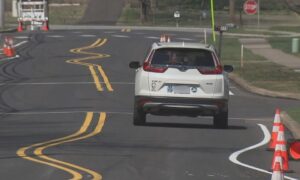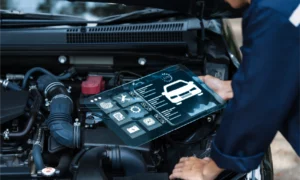Understanding the Importance of Insurance for Uber Drivers
When you decide to become an Uber driver, it is essential to understand the different aspects of driving professionally, and one of these aspects is insurance. As a rideshare driver, you are not only responsible for yourself but also for your passengers and their safety. Ensuring you have adequate insurance coverage can save you from financial burdens and legal complications in case of accidents.
Rideshare services like Lyft and Uber do provide some extent of Uber Insurance coverage once the driver has accepted a ride request or while carrying a passenger in their vehicle. However, this coverage may not always be enough or even applicable during specific periods of driving as an Uber driver.
The Different Periods of Rideshare Driving
To understand when and what kind of insurance solutions are necessary, lets break down the typical rideshare journey into three periods:
- Period 1: The driver is online with the app but has not yet accepted any ride requests.
- Period 2: The driver has accepted a ride request and is en route to pick up the passenger.
- Period 3: The passenger enters the vehicle until the end of the trip when they exit at their destination.
Rideshare companies like Uber offer different levels of coverage during each period. During Period 1, there may be limited liability coverage offered by Uber but no collision or comprehensive coverage available. Once Period 2 begins, when en route to pick up a rider or while completing an active trip (Period 3), additional higher insurance limits kick in provided by these platforms themselves.However, there are some gaps in the insurance coverage offered by Uber that drivers need to be aware of. These gaps could make your personal auto insurance policy necessary to provide complete financial protection.
Coverage Gaps and Personal Auto Insurance Policies
During Period 1, as mentioned earlier, Uber only provides liability coverage with minimal limits. For instance, if you happen to get into an accident with another vehicle while waiting for a ride request, this limited coverage will most likely not be enough to cover the full cost of any damages or medical bills for either party involved.
Personal auto insurance policies are not designed for commercial use. As a rideshare driver, turning on the app is considered using your car for commercial purposes, which means that during Period 1 when only providing liability coverage from Uber, you may still require additional comprehensive and collision protection.In case of an accident during this period, if you do not have proper rideshare insurance or gap insurance coverage in place, and your personal auto insurer finds out that you were driving for ridesharing at that time, they may deny your claim. This can lead to significant financial implications not only due to property damage but also potential legal claims arising from the accident.
Rideshare Endorsements and Commercial Insurance Solutions
To fill these gaps and protect yourself fully as an Uber driver you have several options:
- Rideshare Endorsements: Many popular auto insurers offer specific rideshare endorsements or add-ons tailored explicitly towards covering the unique risks associated with being a rideshare driver. With such an endorsement on your existing personal auto policy, you can have peace of mind knowing that you are adequately insured throughout all periods of driving for Uber.
- Commercial Auto Insurance Policies: Some drivers prefer opting for full-fledged commercial auto insurance policies, instead of risking any gaps in their coverage. These policies are designed to cover vehicles used for business purposes and offer many protection levels, depending on the insurer.
It is essential to get quotes and compare coverage levels from different insurers before choosing a rideshare endorsement or commercial policy, while also considering your individual driving needs, location, and frequency of rideshare driving.
Additional Insurance Solutions
Apart from the primary insurance solutions mentioned earlier, Uber drivers can also consider additional insurance options such as:
- Medical Payments/Personal Injury Protection (PIP): While some states require a minimum level of PIP coverage by law, adding this to your policy can ensure that your medical bills are covered up to a certain limit regardless of who is at fault during an accident.
- Uninsured/Underinsured Motorist Coverage: This additional coverage protects you in case another driver without proper insurance or with inadequate limits causes an accident with damages beyond what their policy covers.
Conclusion
No matter how careful you are on the road as an Uber driver, accidents can happen. Ensuring you have proper insurance coverage during all stages of rideshare driving is crucial for your financial well-being and business prospects. Evaluate your current policy and consider adding rideshare endorsements or pursuing new commercial policies specifically tailored to meet the unique challenges faced by rideshare drivers. Additional layers of protection like medical payments/PIP or uninsured motorist coverage can also protect you further should unfortunate events occur on the road.


































